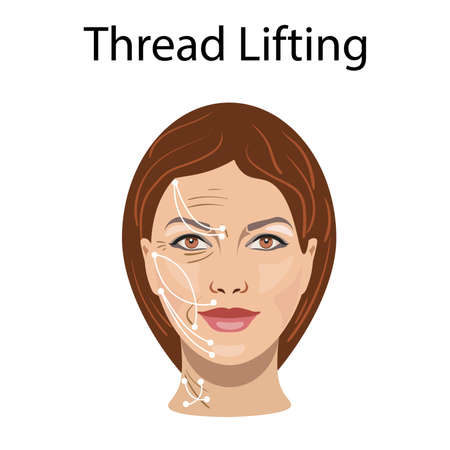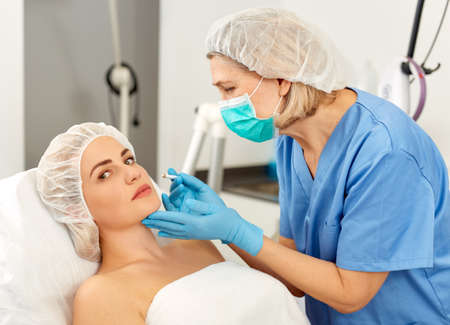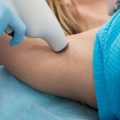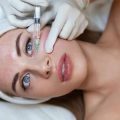Introduction to Non-Surgical Fillers
Non-surgical fillers have rapidly become a staple in the world of aesthetic treatments, especially across the UK. These versatile, minimally invasive procedures are designed to restore volume, enhance facial features, and rejuvenate the skin without the need for surgery or extensive downtime. The popularity of non-surgical fillers in Britain is undeniable, with more people each year opting for these subtle enhancements to boost their confidence and maintain a youthful appearance.
The types of fillers available are varied, catering to different needs and preferences. Hyaluronic acid fillers remain the most sought-after option due to their natural-looking results and reversibility, while other options such as calcium hydroxylapatite and poly-L-lactic acid provide longer-lasting effects for those seeking more pronounced changes. Whether addressing fine lines, plumping lips, or sculpting cheekbones, there is a filler treatment tailored to almost every concern.
People choose non-surgical fillers for many reasons: some wish to soften early signs of ageing, others seek to enhance their features or simply want to feel more comfortable in their own skin. With expert practitioners guiding the process and a strong focus on patient safety, non-surgical fillers offer an empowering solution that fits seamlessly into modern British lifestyles.
2. Preparing for Your Appointment
Taking the first step towards non-surgical filler treatments is both exciting and empowering, but preparation is key to ensuring a positive patient experience. Before you book your appointment, there are several important factors to consider—each designed to help you feel informed, confident, and comfortable throughout your journey.
What to Consider Before Booking
- Your Goals: Reflect on what you hope to achieve with fillers. Are you seeking subtle enhancement or more noticeable changes? Having clear expectations will guide your conversations with practitioners.
- Budget: High-quality treatments come at a price. It’s wise to set a realistic budget that allows you to choose a reputable clinic without compromising on safety or results.
- Time Commitment: While non-surgical fillers involve minimal downtime, you may still need to plan for potential swelling or redness. Consider your social and professional commitments in advance.
How to Choose a Reputable Clinic
Your safety and satisfaction depend heavily on where you go for treatment. In the UK, it’s crucial to select clinics that adhere to strict medical standards. Use the table below as a quick reference when evaluating your options:
| Criteria | What to Look For |
|---|---|
| Practitioner Qualifications | Look for GMC/NMC/GDC registration and evidence of specialist training in aesthetics. |
| Clinic Registration | The clinic should be registered with the Care Quality Commission (CQC) if offering regulated activities. |
| Treatment Portfolio | Ask to see before-and-after photos of previous patients treated by the same practitioner. |
| Consultation Process | A thorough consultation should be offered prior to treatment, with time for questions and discussion of risks. |
| Aftercare Support | The clinic should provide clear aftercare instructions and contact details for post-treatment queries. |
Tips for Readying Yourself Mentally and Physically
- Mental Preparation: Give yourself permission to feel excited or even a little nervous—it’s entirely normal. Take time to research, ask questions, and speak openly about any concerns during your consultation.
- Avoid Alcohol & Certain Medications: In the days leading up to your appointment, avoid alcohol and medications like aspirin or ibuprofen unless prescribed otherwise, as these can increase bruising risk.
- Healthy Lifestyle Choices: Staying well-hydrated, eating nutritious foods, and getting sufficient sleep can support your body’s healing process post-treatment.
- Cleansed Skin: Arrive at your appointment with clean skin free from makeup or heavy skincare products—this minimises infection risk and helps ensure optimal results.
Your thoughtful preparation is an act of self-care—one that sets the stage for a smooth, rewarding experience from start to finish.

3. The Consultation Experience
Your initial consultation is a crucial step in your non-surgical filler journey. This is the perfect time to discuss your aesthetic goals openly and honestly with your practitioner. During this meeting, you will be encouraged to share your expectations, any concerns you may have, and the specific results you hope to achieve. Remember, there is no such thing as a silly question—your comfort and confidence are paramount.
What Happens During Your Initial Consultation?
Your practitioner will carefully assess your facial anatomy, skin quality, and medical history. They will ask about your lifestyle and previous cosmetic treatments to ensure fillers are appropriate for you. This thorough assessment allows them to tailor a treatment plan that not only aligns with your desired outcome but also prioritises your safety and wellbeing.
The Importance of Discussing Expectations
Open communication is key. It’s essential to express what you hope to achieve—whether that’s restoring lost volume, smoothing fine lines, or enhancing natural contours. Your practitioner can then provide realistic advice about what fillers can accomplish, helping to manage expectations while delivering results that feel authentic and harmonious with your features.
Understanding the Role of Your Practitioner
A skilled practitioner does more than just administer treatment; they act as your guide throughout the process. Their expertise lies in both their technical ability and their understanding of aesthetics. You should feel reassured knowing that your practitioner is there to support you at every stage, offering professional guidance while respecting your individuality. By fostering a trusting relationship from the outset, you set the foundation for a positive patient experience and beautiful results.
4. The Filler Procedure: What Happens on the Day
Step-by-Step Guidance Through Your Treatment
On the day of your non-surgical filler appointment, it’s completely normal to feel a mix of excitement and nerves. Rest assured, your practitioner is there to guide you every step of the way, ensuring your comfort and safety throughout. Here’s what you can expect from the moment you arrive at the clinic to when you walk out with a refreshed look.
Arriving at the Clinic
You’ll be warmly welcomed by the clinic staff, who will check you in and confirm the details of your treatment. You may be asked to complete a brief health questionnaire if you haven’t already done so. This ensures your practitioner is fully aware of any medical conditions or allergies, keeping your wellbeing front and centre.
The Consultation and Preparation
Your practitioner will take time to review your goals and answer any last-minute questions. This is also when they’ll map out the precise areas for filler application, sometimes using a cosmetic pencil for accuracy. Once you’re comfortable, they’ll cleanse the treatment area thoroughly and may apply a topical numbing cream to minimise discomfort.
The Filler Procedure Step-By-Step
| Step | What to Expect |
|---|---|
| 1. Cleansing & Numbing | The skin is cleansed, and numbing cream is applied if needed. |
| 2. Marking | Treatment areas are marked for precision and symmetry. |
| 3. Injection | Using a fine needle or cannula, the filler is carefully injected. You might feel mild pressure or a pinching sensation. |
| 4. Moulding & Assessment | The practitioner gently moulds the filler for a natural finish, checking results as they go. |
| 5. Aftercare Advice | You’ll receive tailored aftercare guidance before leaving the clinic. |
Sensations and Side Effects: What’s Normal?
It’s common to experience mild sensations during the procedure—think of it as a gentle pinch or slight pressure at most injection points. Some people notice minor swelling, tenderness, or even small bruises immediately after, but these typically subside within a few days. Here’s a quick guide:
| Sensation/Side Effect | How Common? | Typical Duration |
|---|---|---|
| Mild Discomfort or Pinching | Very common | During procedure only |
| Redness or Swelling | Common | A few hours to 2 days |
| Tenderness/Minor Bruising | Occasional | Up to 1 week |
| Lumps/Bumps (temporary) | Uncommon | A few days (usually resolves with gentle massage) |
A Little Reassurance Goes a Long Way
If you’re worried about discomfort or side effects, remember that these treatments are designed with patient comfort in mind. Most clients find their anxieties melt away thanks to the skilled touch and calm reassurance of their practitioner—so trust in their expertise and enjoy this step towards greater self-confidence!
5. Aftercare and Recovery
Taking care of yourself after your non-surgical filler treatment is absolutely crucial for achieving the best results and ensuring a smooth recovery. You may feel excited to see the changes, but its important to follow professional advice to help your body heal and minimise any unwanted effects.
Essential Aftercare Steps
Right after your procedure, it’s normal to experience some redness, swelling or mild bruising at the injection sites. These side effects are usually temporary and should subside within a few days. To aid recovery, avoid touching or massaging the treated areas unless directed by your practitioner. Its wise to steer clear of strenuous exercise, excessive heat (such as saunas), and alcohol for at least 24 hours post-treatment, as these can worsen swelling or bruising.
Managing Common Side Effects
Should you notice tenderness, slight bumps, or minor discolouration, rest assured that these are typical and usually resolve quickly. Using a cold compress gently on the area can help reduce swelling. If you wear make-up, try to hold off for at least six hours after your treatment to prevent irritation or infection.
When to Seek Further Advice
Your safety and confidence are paramount. While complications are rare when fillers are administered by qualified professionals, it’s essential to keep an eye out for anything unusual—such as severe pain, persistent swelling, uneven results, or signs of infection like increased redness or warmth. If you experience any of these symptoms or simply feel unsure about your recovery, contact your practitioner promptly for reassurance and guidance.
Remember, following aftercare instructions carefully not only helps you achieve natural-looking results but also supports your overall well-being. Don’t hesitate to ask questions—your practitioner is there to support you every step of the way on your journey towards renewed confidence.
6. Results and Realistic Expectations
It’s only natural to feel eager about your non-surgical filler results, but understanding what to expect is essential for a positive experience. Typically, you’ll notice some immediate improvement right after your treatment. However, it’s important to remember that initial swelling or minor bruising may mask the final outcome. Most patients begin to see their true results within a week or two as the fillers settle and any temporary side effects subside.
The longevity of your results depends on several factors including the type of filler used, the area treated, and your individual metabolism. On average, results can last anywhere from six months to over a year. Areas with more movement, such as lips, may require more frequent top-ups compared to less dynamic areas like the cheeks.
Maintaining a balanced perspective is key when it comes to cosmetic enhancements. Fillers are designed to enhance and restore your natural beauty rather than completely transform your appearance. It’s wise to view these treatments as part of an ongoing self-care routine rather than a one-off fix. Regular consultations with your practitioner will help ensure your look remains fresh and harmonious with your features.
Above all, remember that subtlety often yields the most natural and satisfying results. Embrace the changes with confidence, knowing you’ve taken a thoughtful step towards feeling your best while remaining true to yourself.


